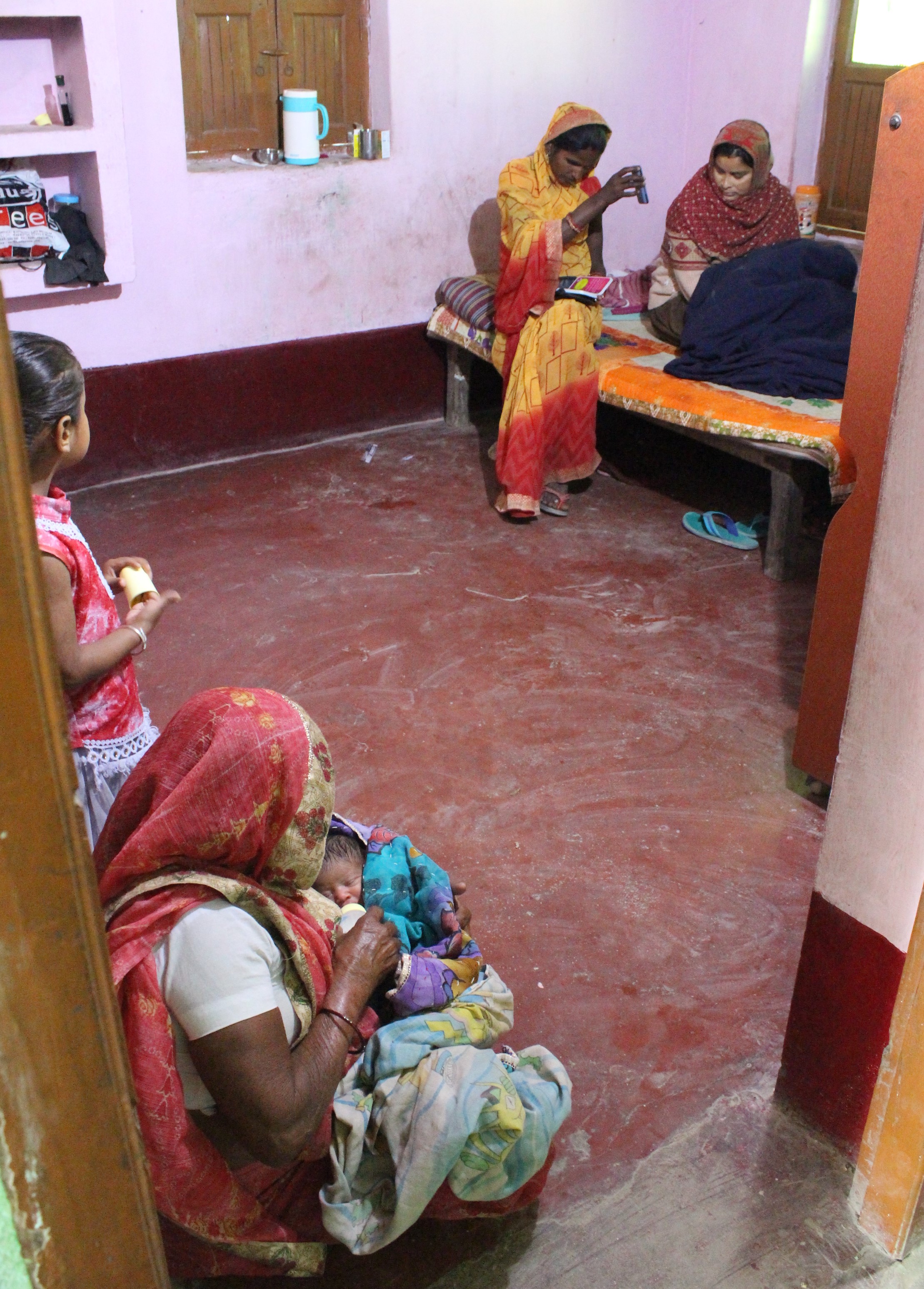12.2 ASHAs are effective service extenders but this overshadows their potential as cultural facilitators
We suggest that a shift should be made that increasingly orients ASHAs as cultural facilitators. ASHAs should continue to be effective service extenders, but a shift in orientation would increase emphasis on their abilities as local experts in customs and beliefs, which in turn could open the door to actively trying to convince or persuade mothers and influencers about needed behavioral changes.
This suggestion, in part, begs the question of how is service extender different from cultural facilitator? Service extension is a key part of the ASHA role, as she is charged with extending health services to harder-to-reach communities by helping to connect them to formal medical system. However, the uptake of specific services is emphasized to the point that an ASHA’s potential abilities to affect behavior change persuasively, via intimate knowledge of local customs and beliefs, is overlooked.
The distinction between service extender and cultural facilitator can be drawn in the scene shown in Figure 12.1. An ASHA is sitting on the bed next to a new mother. She is playing an audio recording from a mobile phone about the importance of breastfeeding a newborn soon after birth. In the foreground is the newborn being bottle-fed by a Dai. In terms of ‘service extension,’ the ASHA can be imagined to mentally check a box saying ‘played audio recording.’ But from the perspective of a cultural facilitator, an ASHA in a situation like that in the photo might notice the lack of uptake and switch strategies in ways that use her knowledge of the context to become more of a persuader. Why is the mother not following the advice in the recording she is playing? What should be done differently to get the message across? ASHA training and support services should help her prepare for this aspect of her role as well.

Figure 12.1: An ASHA plays a recording from her mobile phone about the importance of breast-feeding to a mother, while the mother’s new baby is being bottle-fed in the foreground, potentially showing a contrast between an emphasis on service extension and cultural facilitation.
Expectations about ASHA tasks and abilities need to be reasonable given the support and investment that goes into the program. Likewise, there need to be reasonable expectations about what can be achieved with improvements in training. With such caveats in mind, we still suggest that ASHA’s potential as a cultural facilitator is not fully realized.
Results from the vignettes support this view. For instance, in the mother-ASHA vignettes, Question 1 asks ~‘why did she make that decision?’ and Question 3 asks ~‘what did the ASHA say that convinced her to do the behavior?’ Responses to the questions are different in that Question 1 elicits a variety of answers, but Question 3 elicits almost entirely health/biology responses. This suggests that ASHAs know that mothers make decisions for many kinds of reasons, but then think of a narrow form of argument when asked about persuasion. Indeed, they seem to place, perhaps, too much weight on health and biology reading as a form of persuasion. If so, a program-level adjustment could be trying to change this mindset to think about more nuanced or locally persuasive arguments for bringing about behavior change.
In this sense, it seems that ASHAs may be operating with a “deficit model” of health persuasion. In a deficit model, the persuader assumes that a lack of scientific knowledge is the cause of not taking up a certain behavior, and that presenting the knowledge removes this deficit and then behavior change will occur. In the present context it is not difficult to look outside of the ASHA role to imagine cases where this is clearly not an effective strategy (e.g., anti-vaccine movement in the USA Or belief in other COVID-19 conspiracies). Indeed, in some cases using a deficit model can have effects that oppose the intended behavior change if the knowledge being presented triggers responses linked to cognitive biases such as confirmation bias (in confirmation bias, encountering valid information that contradicts one’s view leads to believing more strongly in the view rather than modifying or abandoning it in light of the new information). The use of deficit models is widely critiqued for a lack of persuasive impact. If the ASHA program inadvertently promotes such a model as a strategy that ASHA’s should employ then this would represent a potentially high impact area of reform. Because ASHA’s are familiar with local customs and the variety of reasons for engaging in behavior from the community perspective, instructing them to use deficit-based argumentation interferes with an opportunity to leverage their strengths. Indeed, the very rationale for the ASHA program involves knowledge of the community system rather than the medical one so it would follow that the program would leverage this strength rather than limit it.